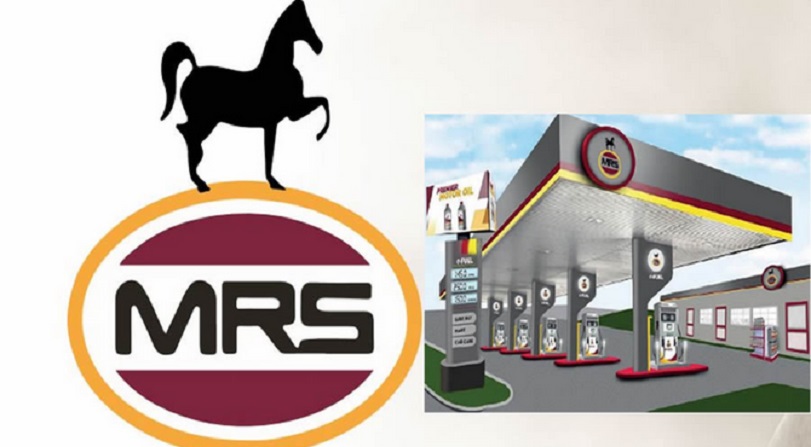Economy
Index Reports Six Quarter High in Business Confidence


By Dipo Olowookere
A resurgence in economic confidence was experienced by credit professionals in the final quarter of 2016, according to the UK’s latest Credit Managers’ Index (CMI). Yet bad debt remains a risk with only 13% of credit managers expecting a decline in 2017.
Full results from the quarterly barometer of the Chartered Institute of Credit Management (CICM) have now been released; the CMI’s headline Index closed up 0.5 points to 59.8, ending a successive three-quarter fall. It is the highest result since Q2 2015 and only the fifth time in the CMI’s seven-year history it has climbed above 59.0.
The Index measures confidence in manufacturing (up 6.2 points to 61.2) and services (up 3.6 points to 59.0), in what Philip King, Chief Executive of the CICM, highlights as rising optimism from credit professionals across the board:
“What is also good to see is the Index is back on its historical tracking of the FTSE All Share, following the brief and negative divergence in Q3 2016,” he says.
The CMI retracted by 1.4% in Q3 while the All Share rose 2.3%. “This compares to the CMI’s 8.1% and All Share’s 3.1% rises in Q4,” Mr King adds. “Which means the CMI has easily mitigated its Q3 losses, and is now back on track with one of the UK’s most important measures of economic confidence.”
The CMI, sponsored by trade credit risk management experts Tinubu Square, is important because it gauges nationwide levels of credit being sought and granted by credit managers across the UK and acts as a primary indicator of actual levels of business being conducted. It consistently maps the FTSE All Share Index and the EU Economic Sentiment Indicator.
The survey also found 32% of respondents saw bad debts increase across 2016, with only 13% expecting bad debts to drop in 2017. 20% expect debts to continue rising, but most worryingly a further 28% remain unsure about how debts will change, and are budgeting for rises.
Michael Feldwick, Head of Tinubu Square UK, said: “The findings reflect conversations we are having across sectors, where there is a general concern about debt continuing to rise. Some seem more concerned than others however, such as the construction industry. It particular highlights the need to monitor and manage trade credit risks closely, some customers are telling us that trade credit insurers appear to be slowly becoming more cautious as their loss ratio and cost ratio increases.”
Further analysis of the results show regional differentiation – Wales, Northern Ireland and Yorkshire and Humber have all dipped below a 52-point threshold; six regions including the North West, South West and East Midlands are reporting scores of over 60.0 points; and London (which fell to a concerning 50.2 in Q3 2016) has risen over the threshold to close at 59.0.
“It is very important for London as the driving force of the UKs economy to display positive results, and it is good news to see that its decrease was only short-term,” Mr King adds.
Of the 19 sectors measured in the CMI, 16 have a CMI score above the 52-point threshold. Only Personal and Household Goods (44.0), Automobiles and Parts (45.0) and Banks (47.0) reported lower than hoped-for results.
“Meanwhile, volatility levels are continuing to stabilise and that may signal a positive future in terms of economic confidence and the outlook for growth,” Mr King continues. “But the uncertain geo-political circumstances surrounding the new US administration and Brexit have the ability to do lasting damage to our economic indicators.”
The CMI is a diffusion Index, producing scores of between one and 100 (typically in a range of 40 – 60). Ten equally weighted factors are included – three favourable and seven unfavourable and the Index is calculated on a simple average of the 10 factors.
Economy
NBA Demands Suspension of Controversial Tax Laws

By Modupe Gbadeyanka
The federal government has been asked by the Nigerian Bar Association (NBA) to suspend the implementation of the controversial tax laws.
In a reaction to the tax reform acts, the president of the group, Mr Afam Osigwe (SAN), the suspension of the laws would allow for a proper investigation into allegations of alterations in the gazetted and harmonised copies.
A member of the House of Representatives, Mr Abdussamad Dasuki, alleged that some parts of the laws passed by the parliament were different from the gazetted copy.
To address the issues raised, the NBA said it is “imperative that a comprehensive, open, and transparent investigation be conducted to clarify the circumstances surrounding the enactment of the laws and to restore public confidence in the legislative process.”
“Until these issues are fully examined and resolved, all plans for the implementation of the Tax Reform Acts should be immediately suspended,” the association declared.
It noted that the controversies “raise grave concerns about the integrity, transparency, and credibility of Nigeria’s legislative process.”
“These developments strike at the very heart of constitutional governance and call into question the procedural sanctity that must attend lawmaking in a democratic society,” it noted.
“Legal and policy uncertainty of this magnitude has far-reaching consequences. It unsettles the business environment, erodes investor confidence, and creates unpredictability for individuals, businesses, and institutions required to comply with the law. Such uncertainty is inimical to economic stability and should have no place in a system governed by the rule of law.
“Nigeria’s constitutional democracy demands that laws, especially those with profound economic and social implications, emerge from processes that are transparent, accountable, and beyond reproach. Anything short of this undermines public trust and weakens the foundation upon which lawful governance rests.
“We therefore call on all relevant authorities to act swiftly and responsibly in addressing this controversy, in the overriding interest of constitutional order, economic stability, and the preservation of the rule of law,” the organisation stated.
Economy
MRS Oil, Two Others Raise NASD Bourse Higher by 0.52%

By Adedapo Adesanya
Demand for hot stocks, including MRS Oil Plc, buoyed the NASD Over-the-Counter (OTC) Securities Exchange by 0.52 per cent on Tuesday, December 23.
The energy company was one of the three price gainers for the session as it chalked up N19.69 to sell at N216.59 per share versus the previous day’s value of N196.90 per share.
Further, FrieslandCampina Wamco Nigeria Plc gained N2.95 to close at N56.75 per unit versus N53.80 per unit and Golden Capital Plc appreciated by 84 Kobo to N9.29 per share from Monday’s N8.45 per share.
Consequently, the market capitalisation went up by N10.95 billion to N2.125 trillion from N2.125 trillion and the NASD Unlisted Security Index (NSI) rose by 18.31 points to 3,570.37 points from 3,552.06 points.
Yesterday, the NASD bourse recorded a price loser, the Central Securities Clearing System Plc (CSCS), which gave up 17 Kobo to close at N33.70 per unit against the previous trading value of N33.87 per unit.
The volume of securities traded at the session went down by 97.6 per cent to 297,902 units from the previous day’s 12.6 million units, the value of securities decreased by 98.5 per cent to N10.5 million from N713.6 million, and the number of deals remained flat at 32 deals.
By value, Infrastructure Credit Guarantee Company (InfraCredit) Plc ended as the most actively traded stock on a year-to-date basis with 5.8 billion units exchanged for N16.4 billion. This was followed by Okitipupa Plc, which traded 178.9 million units valued at N9.5 billion, and MRS Oil Plc with 36.1 million units worth N4.9 billion.
In terms of volume, also on a year-to-date basis, InfraCredit Plc led the chart with a turnover of 5.8 billion units traded for N16.4 billion. Industrial and General Insurance (IGI) Plc ranked second with 1.2 billion units sold for N420.7 million, while Impresit Bakolori Plc followed with the sale of 536.9 million units valued at N524.9 million.
Economy
NGX All-Share Index Soars to 153,354.13 points

By Dipo Olowookere
It was another bullish trading session for the Nigerian Exchange (NGX) Limited as it closed higher by 0.59 per cent on Tuesday.
The market further rallied due to continued interest in large and mid-cap stocks on the exchange by investors rebalancing their portfolios for the year-end.
Yesterday, Aluminium Extrusion sustained its upward trajectory after it further appreciated by 9.96 per cent to N14.90, as Austin Laz gained 9.81 per cent to close at N2.91, Custodian Investment improved by 9.69 per cent to N38.50, and First Holdco soared by 9.35 per cent to N50.30.
Conversely, Royal Exchange declined by 7.22 per cent to N1.80, Champion Breweries shrank by 6.57 per cent to N15.65, NASCON lost 5.36 per cent to trade at N105.05, Sovereign Trust Insurance depreciated by 5.28 per cent to N3.77, and Japaul went down by 4.51 per cent to N2.33.
At the close of business, 29 shares ended on the gainers’ table and 27 shares finished on the losers’ log, representing a positive market breadth index and bullish investor sentiment.
This raised the All-Share Index (ASI) by 895.06 points to 153,354.13 points from 152,459.07 points and lifted the market capitalisation by N579 billion to N97.772 trillion from the previous day’s N97.193 trillion.
VFD Group finished the day as the busiest stock after it recorded a turnover of 192.0 million units worth N2.1 billion, GTCO exchanged 63.5 million units valued at N5.6 billion, Access Holdings traded 49.8 million units for N1.0 billion, First Holdco sold 45.8 million units valued at N2.3 billion, and Secure Electronic Technology transacted 38.3 million units worth N28.4 million.
In all, market participants bought and sold 677.4 million units valued at N20.8 billion in 27,589 deals compared with the 451.5 million units worth N13.0 billion traded in 33,327 deals on Monday, showing an improvement in the trading volume and value by 50.03 per cent and 60.00 per cent apiece, and a shortfall in the number of deals by 17.22 per cent.
-

 Feature/OPED6 years ago
Feature/OPED6 years agoDavos was Different this year
-
Travel/Tourism9 years ago
Lagos Seals Western Lodge Hotel In Ikorodu
-

 Showbiz3 years ago
Showbiz3 years agoEstranged Lover Releases Videos of Empress Njamah Bathing
-

 Banking8 years ago
Banking8 years agoSort Codes of GTBank Branches in Nigeria
-

 Economy3 years ago
Economy3 years agoSubsidy Removal: CNG at N130 Per Litre Cheaper Than Petrol—IPMAN
-

 Banking3 years ago
Banking3 years agoFirst Bank Announces Planned Downtime
-

 Banking3 years ago
Banking3 years agoSort Codes of UBA Branches in Nigeria
-

 Sports3 years ago
Sports3 years agoHighest Paid Nigerian Footballer – How Much Do Nigerian Footballers Earn

















